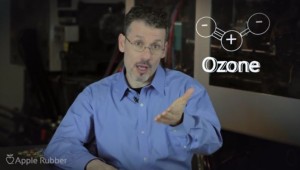While extreme environments have the capability to pose serious threats for seals and O-Rings, one of the first design considerations for engineers should be the effects of ozone. How much exposure will rubber have to this powerful atmospheric oxidizing agent, and what stresses will the application face as a result?
Seals used in oil and fuel-related applications must have superior ozone resistance to prevent deterioration. The use of the wrong compound can be disasterous. Similarly, in order to ensure the success of outdoor applications, it’s crucial to know how to select the proper material for use.
In our latest technical video, we cover some need-to-know facts for fighting ozone — like recognizing common ozone effects, signs of ozone deterioration and how to choose the right materials for extreme-environment use.
In under four minutes, you can expect to learn:
- How ozone attack occurs in rubber compounds
- Which rubber polymers have the toughness and resistance to ozone exposure
- How to prevent deterioration of seals used in oil, gas and fuel-related applications
- When to begin looking for telltale signs of ozone deterioration
- Which materials are gaining wide industry acceptance for outdoor environments
Want to learn more?
For more information on our standard and nonstandard polymers, visit our Material Selection Guide.
What types of ozone and weathering issues do you face? Which materials tend to work best for your outdoor applications? Connect with us on Twitter @AppleRubber.
